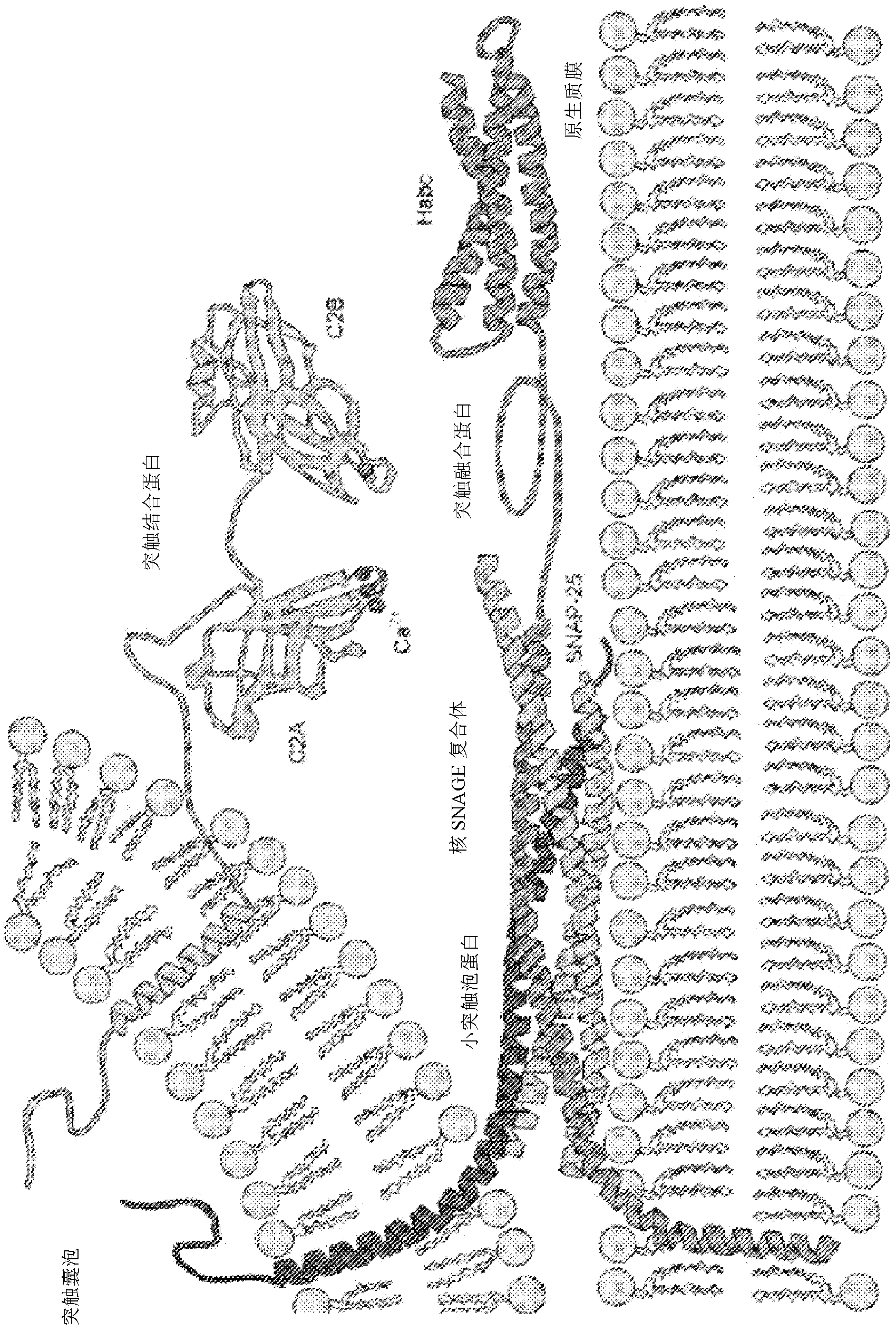Complexing system
A composite system and complex technology, applied in the directions of digestive system, urinary system diseases, nervous system diseases, etc., can solve problems such as not very clearly defined
- Summary
- Abstract
- Description
- Claims
- Application Information
AI Technical Summary
Problems solved by technology
Method used
Image
Examples
Embodiment 1
[0323] Example 1: Four-component bundle
[0324] The inventors show that shortened SNARE helices can be used to assemble functional units into quadruple bundles. The use of shortened SNARE helices is essential for attachment of chemical entities to SNARE polypeptides via synthetic routes. Currently, polypeptide synthesis is efficient, reliable and economically feasible for about 50 amino acids. Therefore, it would be advantageous if the SNARE helix was shortened and allowed for further attachment of peptide sequences or other chemical entities. It is reported that the shortening of a single SNARE motif can lead to the interruption of irreversible SNARE assembly (Hao et al., 1997). The inventors also found that: (1) truncating all helices to 45 amino acid polypeptides still allows the existence of a stable four-helix complex, and (2) various functional groups can be added to either end of these polypeptides. This simplifies the fabrication of multivalent complexes in bundles...
Embodiment 2
[0351] Example 2: Three-component bundle
[0352] Having a simplified TetriCS assembly is useful when fewer than 8 groups are attached. In fact, the full-length SNAP-25 molecule (amino acids 1-206) already carrying two SNARE helices can be used (see Figure 6 ).
[0353] The inventors therefore tested whether the 40 and 45 amino acid rat syntaxin 1A and synaptophysin 2 peptides described above were able to assemble into irreversible complexes with full-length rat SNAP-25B. Figure 7 It was shown that 40 amino acid (panel A) and 45 amino acid peptides (panel B) were able to assemble with SNAP25B, indicating that in a three-component system, a 40 amino acid long peptide is sufficient for irreversible binding to full-length SNAP-25.
[0354] The inventors tested the function of a 40 amino acid Tetrics assembly containing:
[0355] (i) The cysteines at positions 84, 85, 90 and 92 of the full-length rat SNAP25B (amino acids 1-206) were replaced with alanine, which is known to be...
Embodiment 3
[0363] Example 3: Two-component bundle
[0364] The inventors also simplified the irreversible SNARE assembly into a two-component system. Bicomponent affinity-based tools are fundamental to all basic research and are invaluable in the development of pharmaceuticals and diagnostics (Uhlen, 2008). Applications include affinity chromatography, microarray technology, microplate-based scanning and many biotechnological methods. A major factor for the success of these applications relies on the robust, irreversible immobilization of proteins either on solid surfaces or in defined orientations in three-dimensional matrices. Several recent reviews have highlighted some shortcomings of existing immobilization techniques (Kohn, 2009; Tomizaki et al., 2005). For example, in the case of chemical protein coupling, irreversible surface immobilization can be achieved, but the product may be in a non-functional state due to positioning issues and chemical modifications. Instead, various t...
PUM
| Property | Measurement | Unit |
|---|---|---|
| molecular weight | aaaaa | aaaaa |
Abstract
Description
Claims
Application Information
 Login to view more
Login to view more - R&D Engineer
- R&D Manager
- IP Professional
- Industry Leading Data Capabilities
- Powerful AI technology
- Patent DNA Extraction
Browse by: Latest US Patents, China's latest patents, Technical Efficacy Thesaurus, Application Domain, Technology Topic.
© 2024 PatSnap. All rights reserved.Legal|Privacy policy|Modern Slavery Act Transparency Statement|Sitemap



